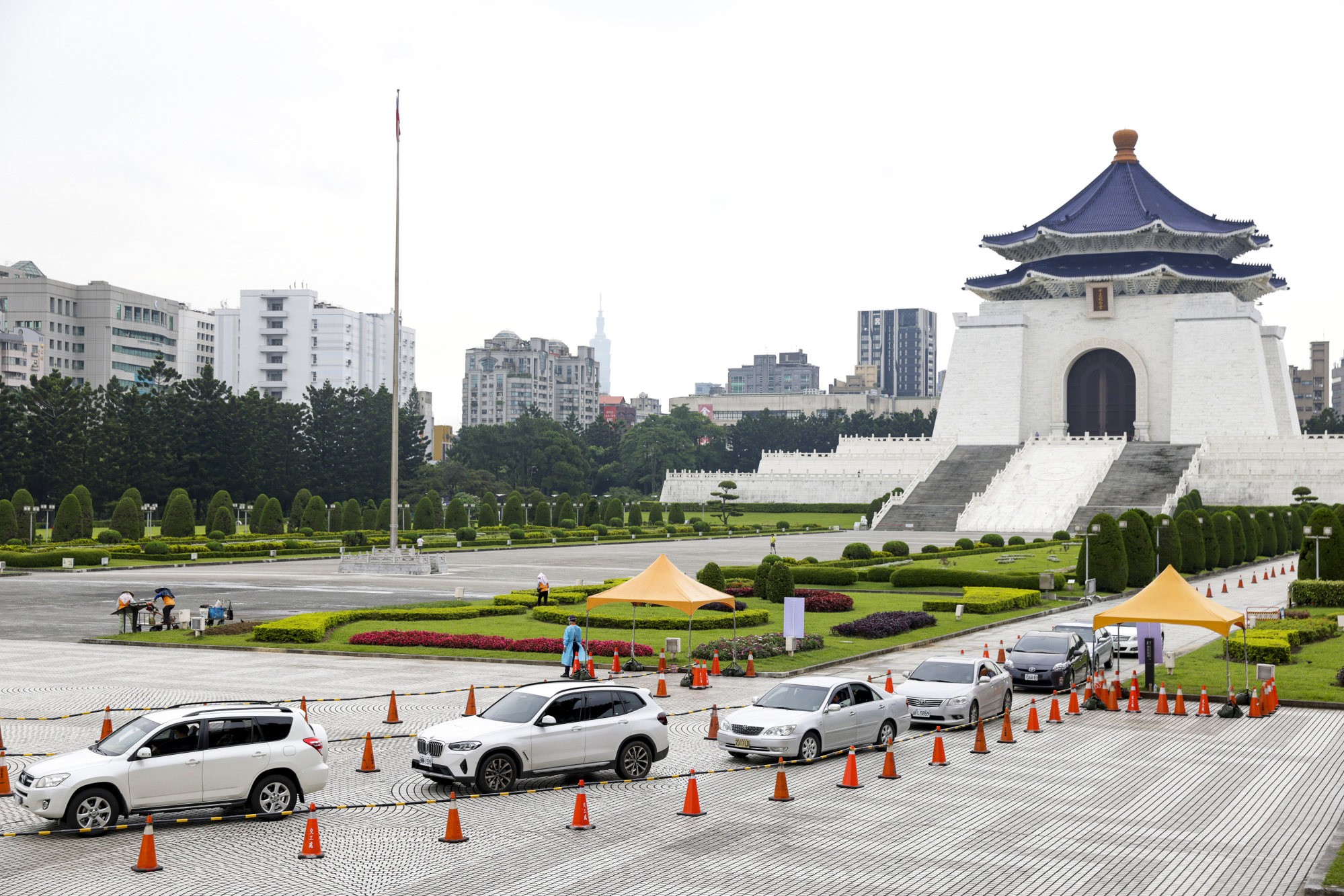
As Taiwan reopens its borders, is it ready to live with Covid?
- Transit passengers can again travel to the island from Wednesday with a shortened three-day quarantine period
- But case numbers are still high and hospital workers say they have been overwhelmed in the latest surge
The easing of entry rules was announced as Taiwan’s daily case numbers and deaths have started to fall, and goes further than expected – the government had said it was considering relaxing the rules for business travellers first.
But Covid-19 continues to spread in the community – 68,965 new cases and 143 deaths were reported on Wednesday. Health Minister Chen Shih-chung tested positive the previous day, and three other key figures in the island’s pandemic control efforts have also been infected.
The latest surge in cases since the end of April has put Taiwan’s policy of living with the virus to the test – straining the health system and raising the question of how the island will fare in the next stage as the borders reopen.
‘Exhausted’ health workers
But while Hong Kong’s health system was pushed to the brink of collapse, Taiwan’s hospitals have fared better – though frontline medical workers say the workload has been overwhelming and many have been infected themselves.
The outbreak began in Taiwan’s north, with Taipei, New Taipei City and Taoyuan the worst-hit in May and infections peaking at the end of the month.
“There were many hospitalisations, with many medical staff getting infected too. This meant the hospital was hamstrung and everyone was exhausted,” said Wang Chi-yun, secretary general of the National Taiwan University Hospital Union in Taipei.
“Now, we’re still observing the situation and the case numbers haven’t dropped a lot. The situation is slightly better than in May, but not by a lot.”
Wang said about half of the medical team on every ward at the hospital would have been infected with Covid-19 at some point in May.
Taiwan’s insurers brace for Covid-related claims amid outbreak
Laboratory staff have also been overwhelmed, according to Guo Guei-ying, president of the Taipei City Hospital Union.
“Average working hours [in the hospital lab] would be over 12 per day as the teams worked round the clock in shifts to test PCR samples and release reports in an endless loop – they were even sleeping at the hospital,” Guo said.
Guo works at one of six hospitals designated for Covid-19, and patients have streamed into its emergency room for tests and treatment during the outbreak.

As infections started to decline in the north in June, cases ticked up in the central and southern parts of Taiwan.
In the southwest, Chao Lin-yu, head of orthopaedics at Ditmanson Medical Foundation Chiayi Christian Hospital, said their Covid-19 wards were full as cases rose in the city last week.
Chao said the hospital – the largest in Chiayi – was holding weekly meetings to allocate beds and prepare for more hospitalisations.
Covid-19 patients in Taiwan previously had to be isolated in a hospital ward. But the Central Epidemic Command Centre changed its policy at the end of May to free up beds and infected patients can now share wards.
Living with Covid?
As Taiwan takes the next step towards a full reopening, some are questioning whether the island is fully ready to live with the virus.
“It doesn’t look like we are living with the virus in practice,” said Guo from the Taipei City Hospital Union, who works as a nurse in its outpatient department. “If someone tests positive, a large-scale disinfection exercise will ensue – but shouldn’t I just treat them like they’ve got a cold?”
Chao from the Chiayi hospital said people feared getting infected “because over the past two years they have been told how dangerous it is to get the virus”.
“But most people have had three shots and most cases are mild. It’s impossible not to have severe cases and deaths, but this is a necessary step for society to transition to another stage,” he said.
Both Shanghai and Taiwan Covid strategies ‘a nightmare’ for citizens
While the government and medical experts agree that the peak of infections has passed, cases are still rising in some places – including among staff at Chao’s hospital.
Of its 3,200 medical workers, 100 had tested positive by May 25, and two weeks later the number had risen to 194, according to Chao. But he expected most of those cases would be mild and they would quickly recover and be able to return to work soon.
Chunhuei Chi, director of the Centre of Global Health at Oregon State University, expected hospitals in Taiwan’s south would be able to handle the surge in cases.
He said living with Covid-19 was the only path forward for the island.
“Taiwan can’t continue to keep its borders closed, which has already negatively impacted many of its domestic [non-export-oriented] industries and international collaborations,” Chi said. “It’s already far behind most nations in the world in terms of opening its borders and it needs to do so in a safe way.”

